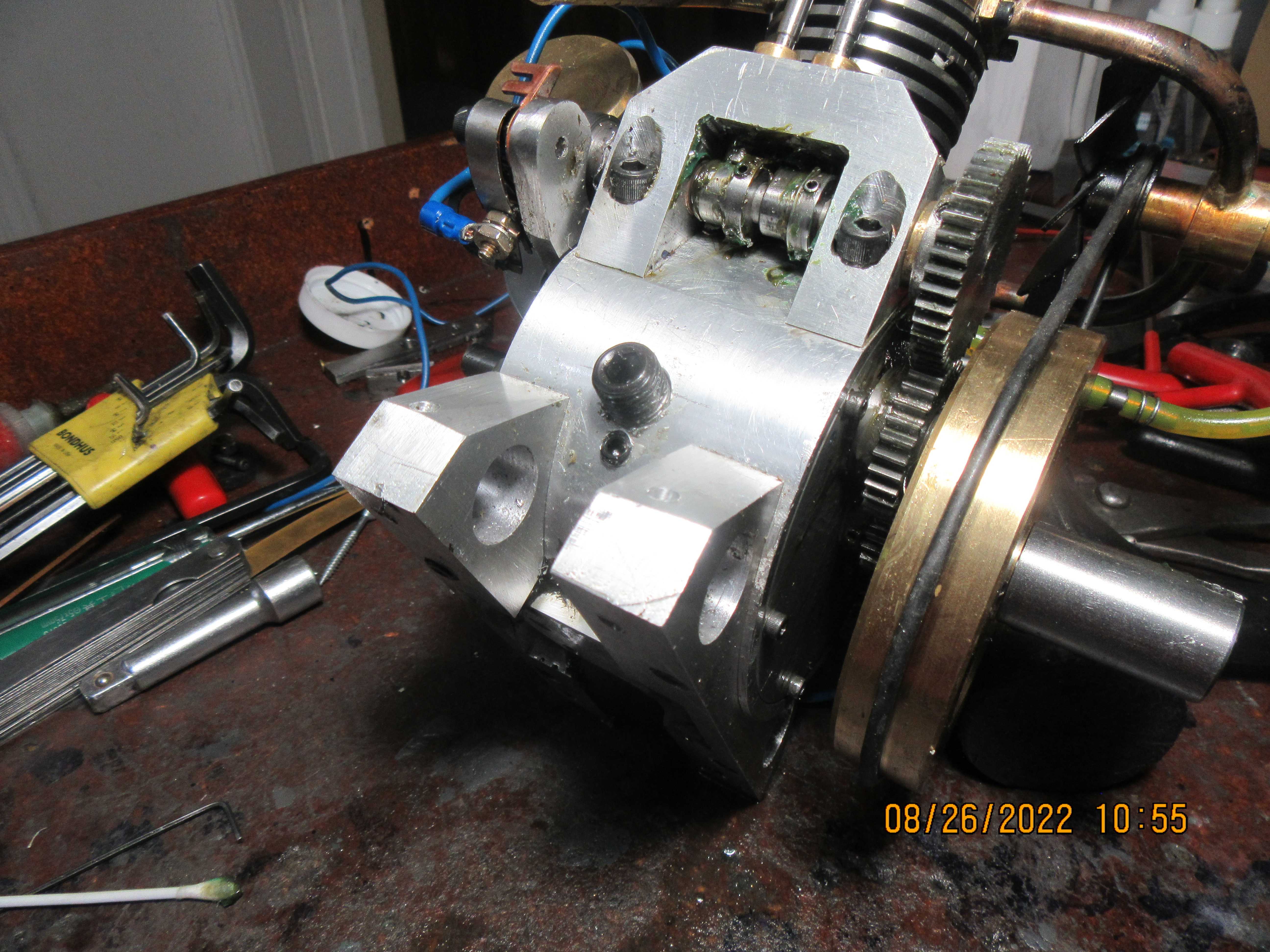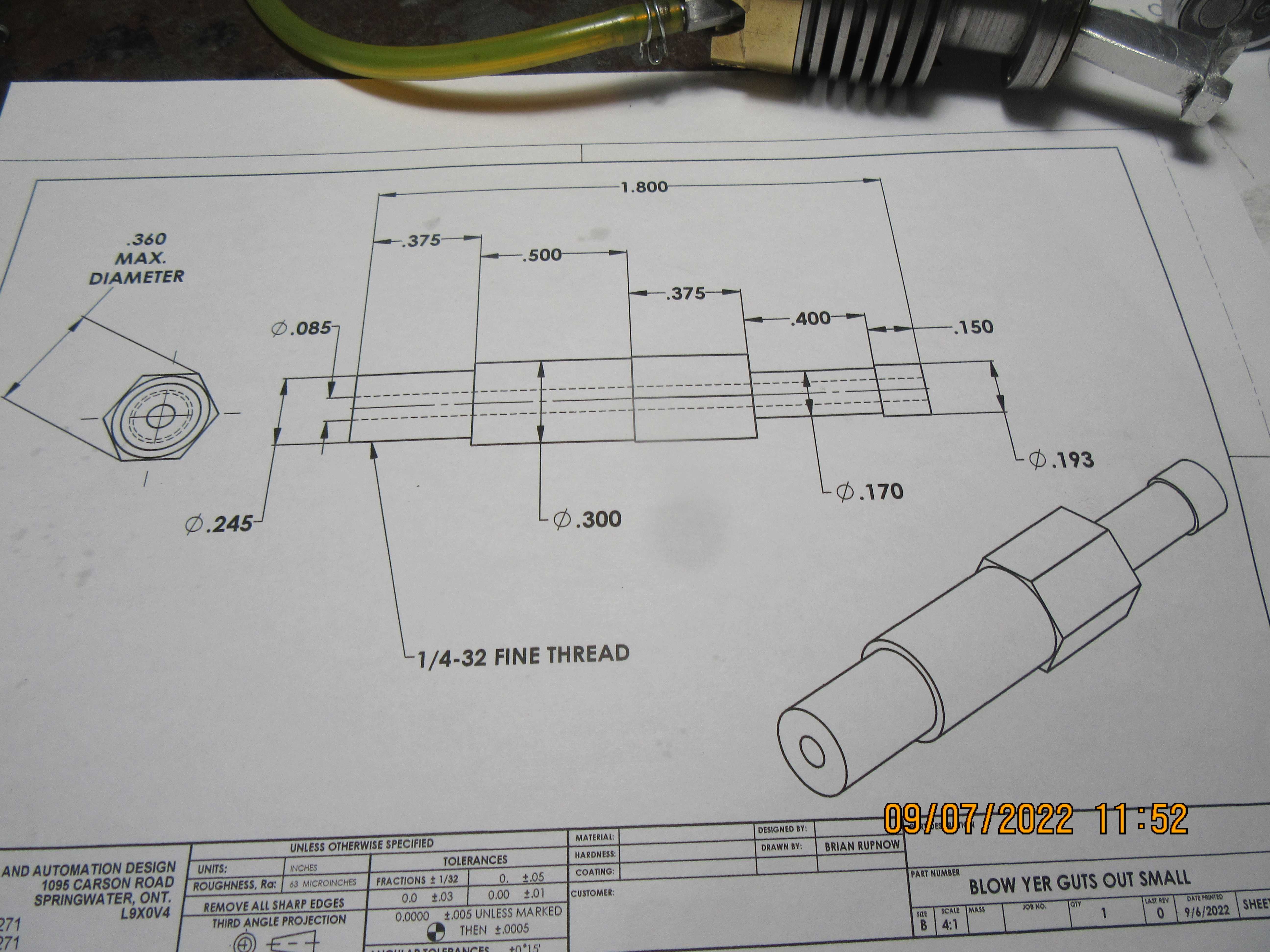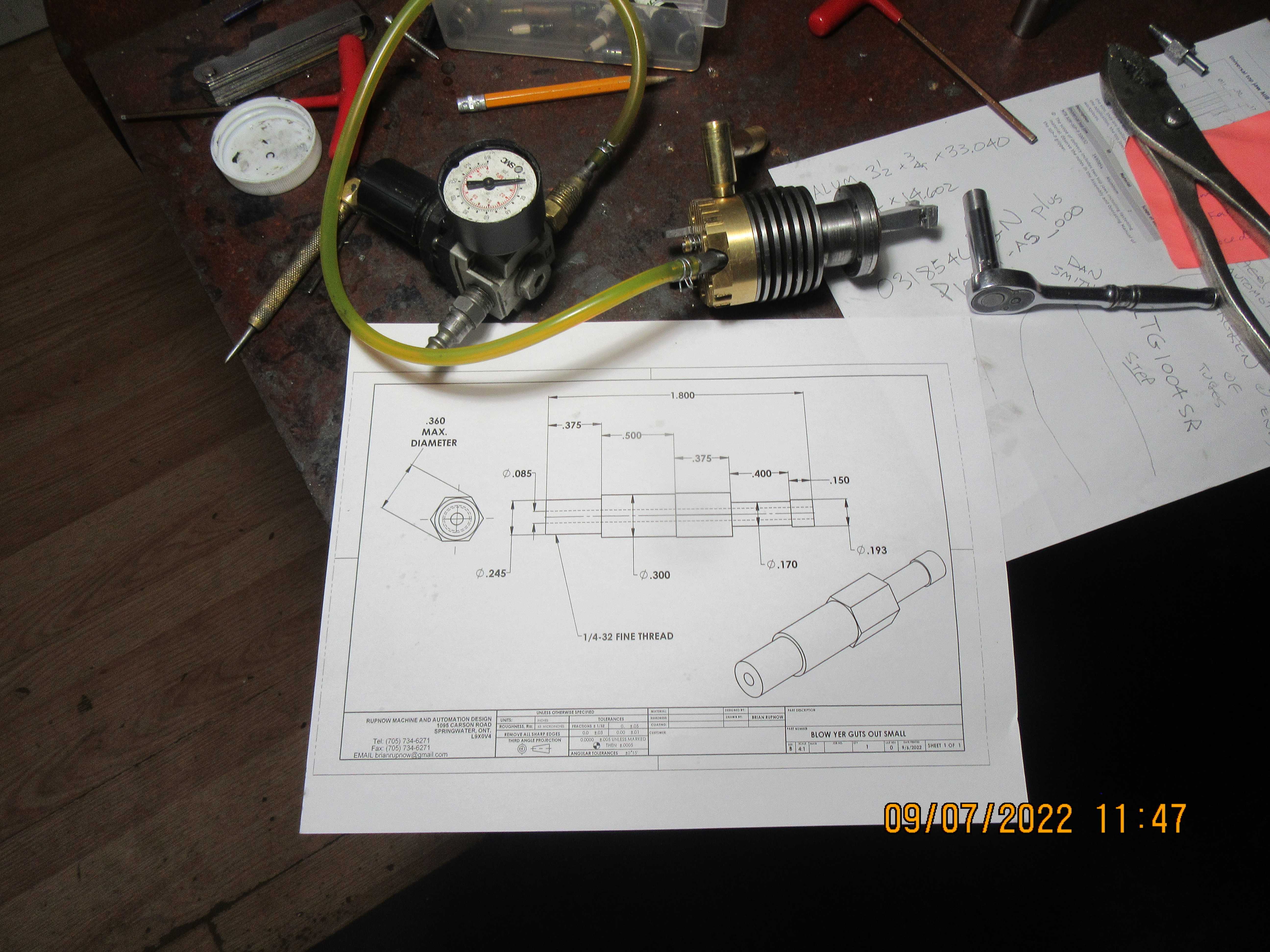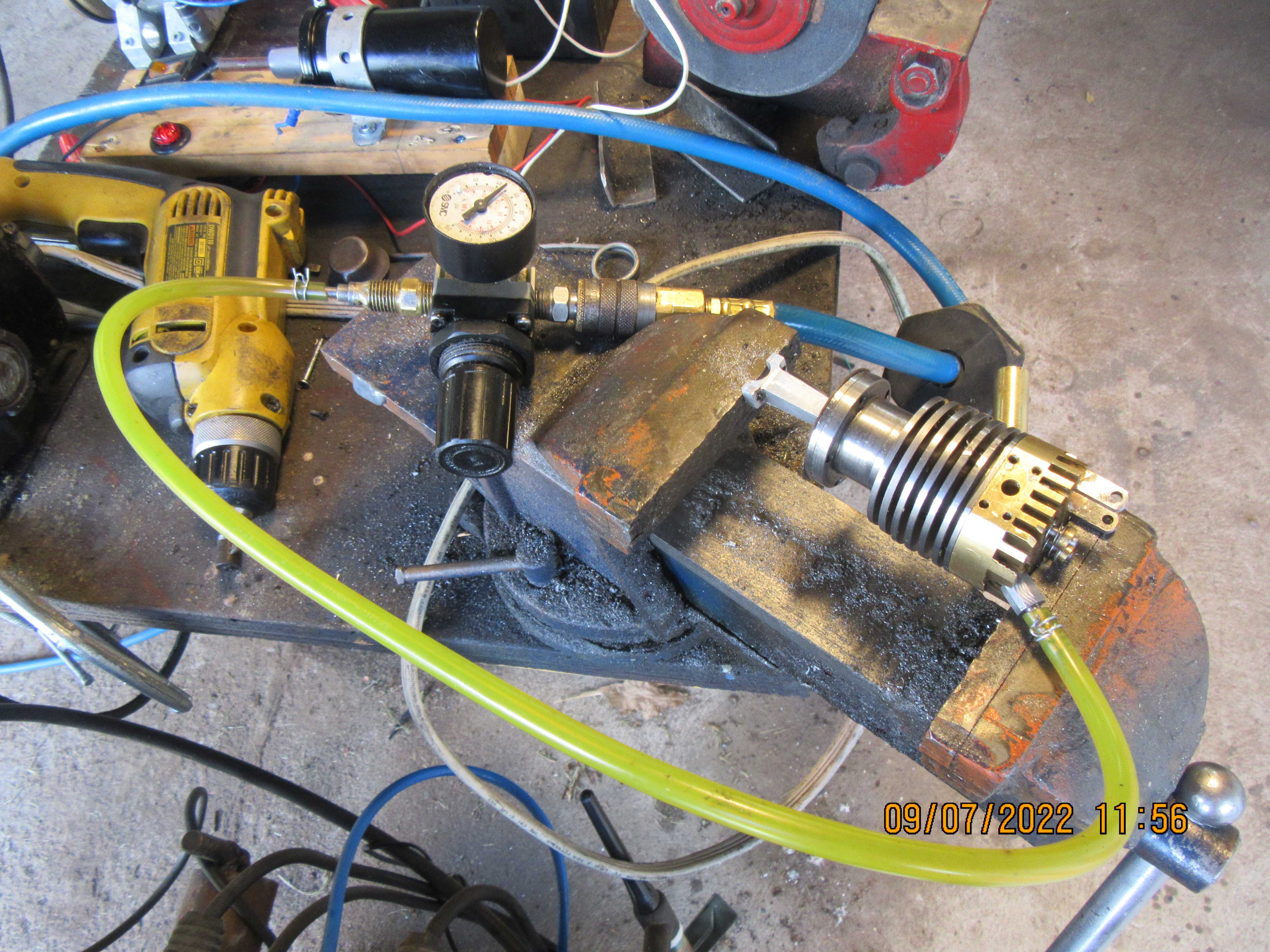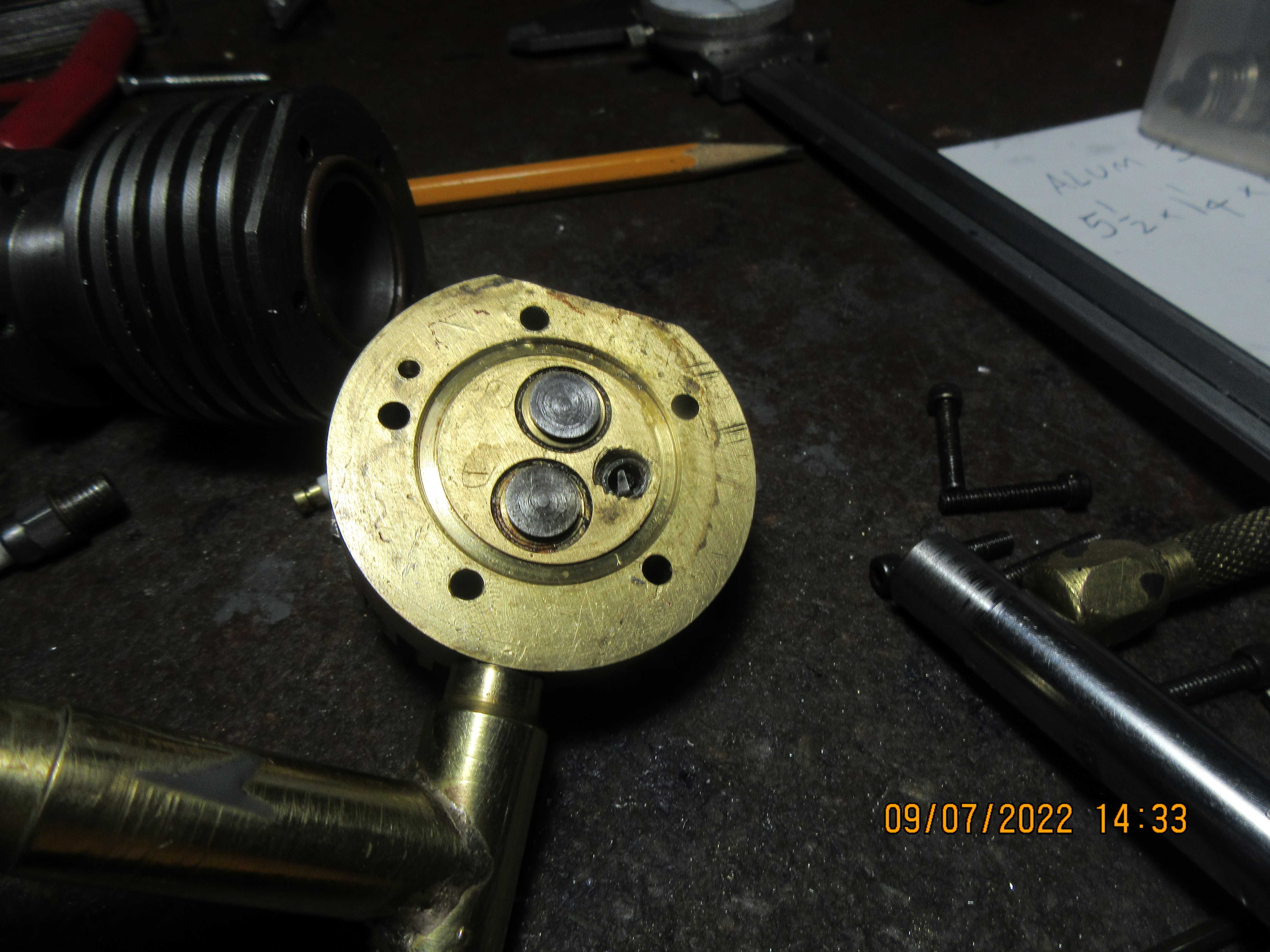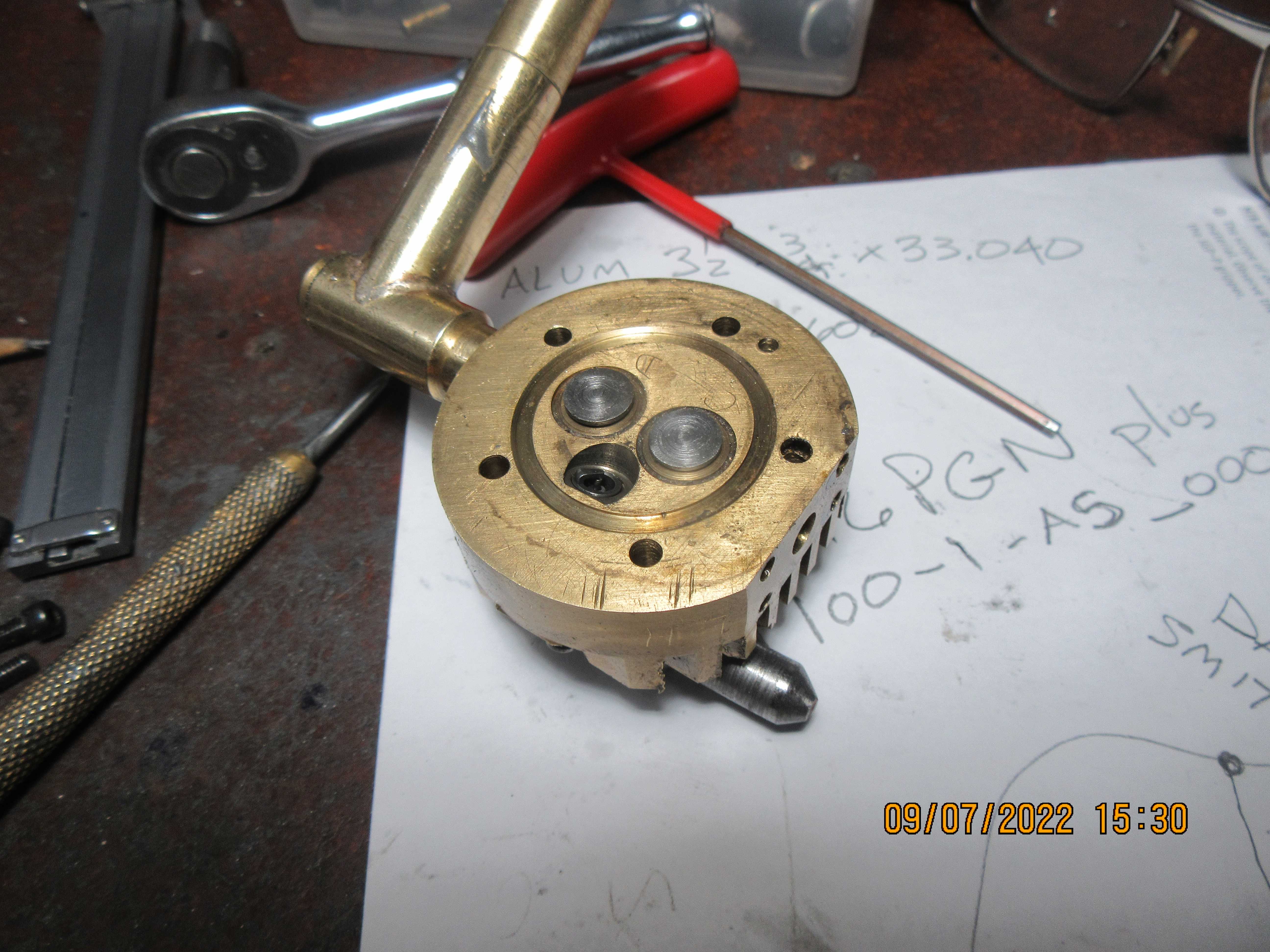Brian. Great to hear you got it running .
That pressure building up in the crankcase may be why you are getting so much blue smoke out the exhaust ( oil vapour forced by the rings ) and the pressure will cause extra leakage at your access cover in the bottom .
I'm not sure what RC 4 stroke model engines use , the smallest I've seen is a Honda 4 stroke trimmer .
You may be able to incorporate it into the plug of your oil fill assembly .
Bill
That pressure building up in the crankcase may be why you are getting so much blue smoke out the exhaust ( oil vapour forced by the rings ) and the pressure will cause extra leakage at your access cover in the bottom .
I'm not sure what RC 4 stroke model engines use , the smallest I've seen is a Honda 4 stroke trimmer .
You may be able to incorporate it into the plug of your oil fill assembly .
Bill





